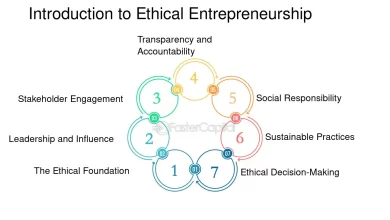What Are the Top Learning Challenges Faced by L&D and Training Managers? .What Are Their Respective Solutions?

Your corporate training’s ROI (return on investment) may be severely hampered by the most prevalent L&D problems training managers face. The great news is that these learning challenges can be reduced relatively quickly. Here is a quick guide to addressing 10 of the most pressing L&D issues at work:
1. Managing Change
Change inside an organization is more frequent and complex today than ever before. One of the top learning challenges highlighted by L&D managers is maneuvering through changes linked to integrations, mergers, innovation, finances, and employment. Read more: Corporate training platform
Solution
By creating messaging and producing development materials that illustrate the “what” behind reforms introduced, L&D professionals could collaborate with corporate executives and other stakeholders. This will benefit them in the following ways:
- Give their instruction the appropriate goal, tenor, and message.
- Examine the audience’s requirements from a variety of angles.
- Set priorities for their projects to reduce some of the pressure and difficulties that transition may cause.
2. Training Future Leaders
Leadership development is a learning challenge in many workplaces. To encourage their performance and guarantee that the company will be effective in both the short term and long term, companies need to train leaders at each position, from front-facing team leaders to C-suite executives.
Solution
Organizations are 2.4 times more effective in reaching their performance targets when they spend on professional development. L&D specialists can actively assist in this by:
- Knowing the leadership qualities that the firm expects and needs will help the company achieve its operational and human resource planning objectives.
- Giving leaders the chance to build the competencies they want to know and recognize what they’d like to study. This enables L&D experts to alter the growth paths of leaders.
- Identifying connections between teammates’ passions and personal aspirations, and business demands so that learning can be tactically driven and personally motivating
- Developing a learning plan with corporate leaders that includes definite milestones as well as short-term and long-term objectives
3. Getting Learners Active
L&D experts must convey the importance of corporate training. Too frequently, other pressing responsibilities appear to take precedence, whereas learning and growth are neglected. It can be challenging to encourage individuals to attend, participate actively, and complete their development tasks, which will probably be the case without clear priority or accountability procedures.
Solution
The human resources and leadership departments should collaborate with the firm’s L&D team to establish training and development as an organizational priority. Continuous learning ought to be a fundamental corporate goal simultaneously offered to present workers and incorporated into the selection and hiring procedures. This may be accomplished using techniques like:
- Making instruction practical in a manner that enhances teammates’ day-to-day productivity.
- Recognizing each employee’s larger professional objectives and offering chances for development and training to suit those pursuits.
- Recognizing how distinct and comparable learning preferences and requirements exist among different workforce generations
- Delivering personalized development programs.
- Creating learning routes that seamlessly transition from one function to another regarding their complexity and responsibility level.
- Setting up L&D as a key for the organization by rewarding satisfactory conclusions of online courses.
4. Providing Reliable Training
Consistent training is more challenging to deliver when a business is international or geographically distributed. Geographical restrictions, rising prices, language obstacles, problems with transcription, and the requirement for virtual training are among the most typical difficulties in learning and development.
Solution
Training and advancement can be provided more regularly by L&D managers by:
- Dedicating to communicating using several mediums such as telephonic discussions, video conferencing, instant messaging, and email.
- Delivering skills training that is motivated by and tailored to the audience’s requirements
- Providing real-time feedback to speed up training progress and performance.
- Establishing connections with teammates fosters camaraderie, sincere relationships, and open communication about the required instruction.
- Setting aside regular time to speak with team members and discuss the team’s individual and organizational goals.
5. Application for Tracking Skills
At most, it might be challenging to demonstrate a training program’s “stickiness” or durability. For skills to be taught, applied, and sustained over time in the workplace, L&D professionals need to develop effective strategies.
Solution
Create a skill-application assignment in which you and your learner decide on a task. The staff member should have the chance to use the abilities they have acquired via their L&D course during this assignment.
A schedule should be established with pertinent checkpoints, so the learner is responsible for the project’s completion. Consider developing a second project after the first one is finished that expands on those talents so they remain current and valuable as the person’s abilities develop.
6. Teaching Conflict Management Techniques
Even for experienced professionals, addressing conflict well can be challenging, yet conflict resolution is a valuable trait that simply can’t be ignored. In the office, conflict is experienced by 85% of teammates. Conflict can shorten a company’s lifespan and negatively affect its health if it isn’t addressed. It can also raise turnover and lower employee morale. Read more: e learning management system
Solution
L&D managers should comprehend the five phases of resolving conflicts and design training that guides employees through each level.
- What is the conflict? Examine the setting and the origins of the dispute.
- Watch for systemic causes: Call attention to underlying problems and assist teammates in having their emotions under control when they discuss the issues.
- Identify needs: People are willing to disclose their requirements and seek solutions.
- Conduct brainstorming sessions: Team members define goals and potential solutions they’re willing to collaborate on to resolve the issue during a brainstorming session.
- Decide on a specific course of action and carry it out: People discuss their dedication to a resolution and outline the subsequent steps.
7. Highlighting the Value of Leadership
Keeping staff training at the forefront of an organization can be difficult. The decision on the amount of learning that will take place, who will receive it, and how many dollars will be allocated for development reasons is frequently left to a small group of significant players.
As a result, the L&D division must establish a long-term vision to guide it through the future. The plan should explain the purpose of training, the people it benefits, the benefit it delivers, and how it will add value in the upcoming years.
Solution
Collaborate with your clients and users, such as unit heads, executives, and others, to pinpoint any new requirements, difficulties, problems, or pain spots relating to the effectiveness of human resources. Determine the workforce’s skills shortages and the specific competencies that the workforce needs.
Use surveys, evaluations, focus groups, exit interviews, and other data to get insights. By leveraging these insights, you can concentrate on essential procedures that provide value and enhance organizational performance.
8. Measuring Training Efficiency
Many L&D practitioners must show how training initiatives have measurable effects on the organization. L&D executives may show an ROI by undertaking quantitative evaluation and connecting metrics and indicators to learning activities. It might be tough to start measuring the ROI in an efficient method for some firms that haven’t developed this process.
Solution
Start by determining whether the company already has KPIs or measurements that can be connected to educational programs. Or else, you’ll need to begin by creating a database of potential measuring concepts. While “hard” measurable metrics are desirable, softer indicators that might be less readily quantifiable do have importance.
Hard measurements examples:
- Scores of engagement
- Ratings of team members’ contentment
- Decrease in turnover
- Scores for job satisfaction
Soft-measures examples:
- Securing top talent for the company
- Fewer conflicts
- Processes that have been made less frustrating, making the workplace more fun
9. Highlighting the Value of Leadership
Among the most challenging tasks for an L&D practitioner is ensuring that training is efficient, retained, and applied. Often, a lot of material must be addressed in a short time. Similarly, many themes can call for extra innovation or unusual delivery strategies to promote skill development.
Solution
L&D specialists ought to:
- Determine the intended outcomes by asking the correct questions. These must be planned beforehand to keep L&D experts on schedule and give training programs a thoughtful perspective.
- Give the learners the chance to voice their opinions, engage in group discussions, and give your team time to think, evaluate, and investigate. This is essential for completing any knowledge gaps.
- Make sure to incorporate actual, industry-relevant cases into your course or request that participants bring examples when they attend. It will prevent the instruction from being overly theoretical and assist in rooting it in their experience.
Alternative learning methods comprise self-directed e-learning, including post-session developmental projects for reinforcement, hybrid learning, lunch-and-learns, m-learning, and microlearning. Read more: learning management system
10. Tailoring Instruction for Different Audiences
You must prepare as an L&D expert to deliver your instruction to a varied, multi-generational workforce. Hence, when creating learning programs and developmental assignments, it’s essential to consider the target audience’s needs, cognitive styles, expertise, and belief systems.
Solution
Plan, create, and present learning experiences that incorporate at least a few of the following:
- Clearly comprehend the training’s overarching objectives and the outcomes the organization hopes to achieve.
- Organize focus groups and arrange one-on-one meetings with a section of the public to discover ways to understand better what they perceive as needing and how best to meet it.
- Establish educational objectives that align with the organization’s and the participants’ demands.
- To reach a larger audience, use adult learning theories and various learning modes.
- Reap the benefits of the training event’s various perspectives and distinct viewpoints.
- Encourage spirited discussion and idea exchange.
- Remind individuals to debate with each other civilly when appropriate to foster tolerance and curiosity about new concepts.
Conclusion
As you’ve seen, every issue with learning and development has a remedy. And a top-notch LMS can be utilized to implement the majority of the options. We think that an excellent LMS adheres to three principles.
It should be simple to operate so that instructors and students don’t experience any stress when utilizing it. It needs to include every feature you require for your training standards. Finally, it needs a capable support group. If you adhere to these three guidelines when selecting your eLearning platform, your organizational learning will increase quickly.




